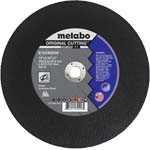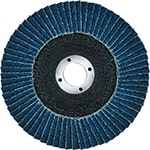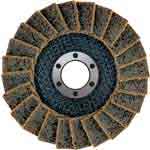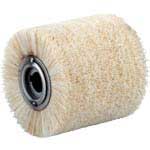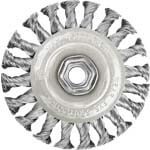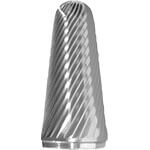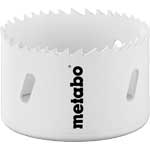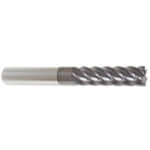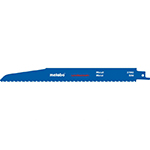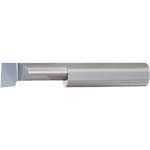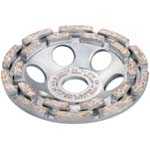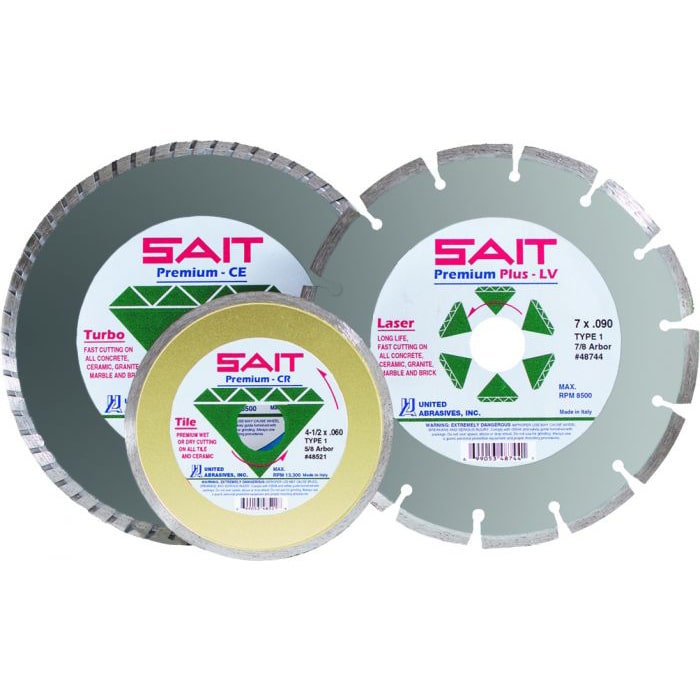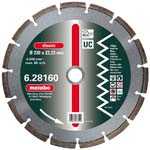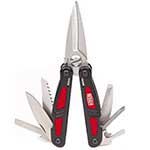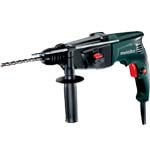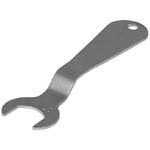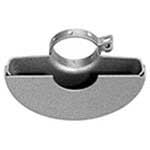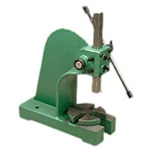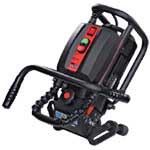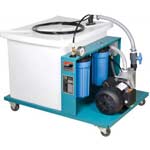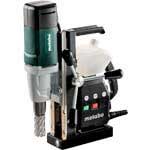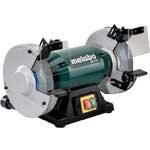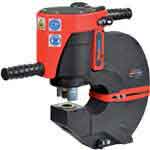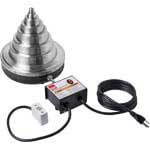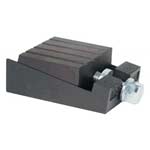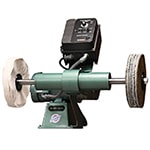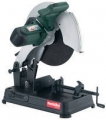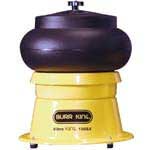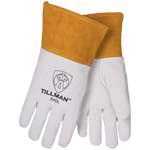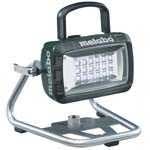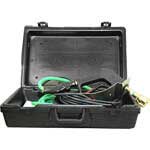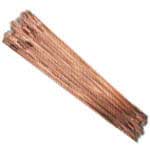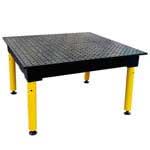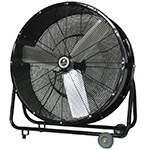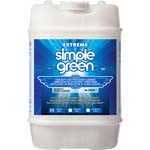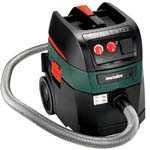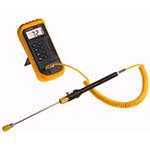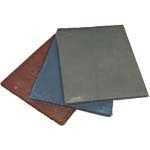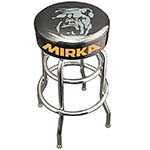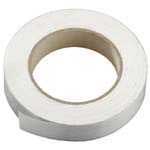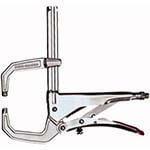HOW TO CHOOSE FLAP DISCS
Choosing the correct flap discs is key to reducing finishing time, lowering costs, and improving work piece quality. In the metalworking industry, flap discs have become one of the most important tools in saving time and money because they are versatile; capable of grinding, blending and finishing. In addition to this, they are engineered to run cooler than many other abrasives, which decreases the chances of damaging the workpiece. They have less downtime for changeouts, run quieter, require less pressure, and have reduced vibration; all of which makes them popular among professional metal workers. When selecting what type of flap disc to purchase, it is important to understand the varIables to achieve optimal performance. By understanding the factors, users can choose the best flap disc for their operation and minimize both cost and grinding time. Major variables are shape, abrasive grain, grit size, density and backing plate. We offer a wide range of discs from 2 to 7 inches and they fit almost any grinder. Here, we look at the variables you need to understand so that you can choose the correct flap disc for your workpiece.
SHAPE
Flap discs are used primarily with angle grinders and are engineered with a hub. There are two main shapes of flap discs, Type 29 (conical) and Type 27 (flat) and their purposes are different. The flaps are applied to the workpiece flat or at an angle. Type 29 discs are optimal for stock removal for edge work and contoured surfaces because the tapered shape allows for full contact between the flaps and work pieces. The angled shape is designed for spot grinding e.g. a weld seam with an ideal working angle of 15°-25° degrees. They are ideal for fast stock removal because they have better surface contact than Type 27 discs. Type 27 discs are best used for blending and smoothing on flat surfaces and are more appropriate for finishing. The flat shape is designed to grind edges and flat surfaces with a working angle of 0°-15° degrees.
ABRASIVE GRAIN
Arguably the most imperative characteristic that you need to determine for your choice of flap disc is the grit and abrasive grain needed for your application. The results you are trying to achieve should dictate what grain you choose also. The main types of abrasive grains are:
Ceramic Alumina: Provides the fastest cut and longest life. Ceramic grain flap discs excel at grinding and finishing stainless steel and other high nickel alloys. The tough ceramic grain cuts faster and cooler than any other grain type. Tests have shown that for stainless steel applications, ceramic grain flap discs lasts twice as longs as zirconia cloth and removes material 50% faster. High cut rates on stainless steels, carbon steels, high alloy materials and other demanding applications. Ceramic grains fracture, which provide a constant and steady supply of new sharp cutting edges.
Zirconia Alumina: Zirconia is the most widely used coated abrasive for flap discs. Zirconia is an extremely hard grain which excels at grinding while providing a long service life. The Zirconia cloth includes a lubricant. The lubricant keeps the grinding tempature low and allows our zirconia discs a long service life. For use on ferrous materials, stainless steel, carbon/mild steel and casting applications. High performance grinding with high stock removal rates in demanding applications.
Aluminum Oxide with Calcium Stearate: Traditionally flap discs clog and load when grinding aluminum and other soft metals (brass, copper bronze). Our Aluminum Oxide with Calcium Stearate discs prevents clogging and outlasts competitive flap discs on aluminum and other soft metals. For use on soft metals such as aluminum, bronze and copper. Calcium liquefies under heat to prevent loading. Aluminum Oxide with Calcium Stearate works best for easy to grind materials.
Aluminum Oxide: The most common and one of the earliest abrasives utilized in grinding wheels. Over the years, it has been used in combination with other materials to produce new abrasives that are now available today. It is cost efficient and a good basic level grain for general purpose applications. It is best used on Non-Ferrous materials; Aluminum; Carbon Steel; Alloy Steel; High Speed Steel; Tempered Malleable Iron; Wrought Iron; Bronze
GRIT SIZE
Grit size is also an important factor in achieving the desired results. The chart below will help you to match the grit size with the particular operation. This chart is intended as a general guideline.
DENSITY
Standard Density offers the ability to access tighter work areas and more control over the disc. High Density Flap Discs are 50% thicker than standard discs and therefore last approximately 50% longer. For high volume production, High Density Flap Discs are ideal as they minimize the time operators spend changing discs. Each flap disc manufacturer varies on how many flaps there are, the space in between flaps, and the angle of the flaps. These attributes in combination are known as the density of the disc. Knowing what type of performance needed on your application will help determine what density you need, which in turn helps achieve optimal performance. Standard density flap discs, grits 24-60 are manufactured using a tough polyester-cloth for more aggressive material removal, while grits 80-120 are manufactured with a poly-cotton backing that provides greater strength, low stretch and is tougher than typical cotton clothes, but allows for greater heat dissipation in finishing applications on heat sensitive materials.
BACKING PLATE MATERIAL
The next consideration when choosing your flap disc is the backing plate. Fiberglass is most common due to its light weight, vibration absorption, high strength and smear resistance. For finishing and blending, plastic is growing in popularity. Plastic backings are conformable and are trimmable, which means more of the flaps are consumed. The least used backing is aluminum. Aluminum backings are rigid and have high-strength, which is suitable for demanding applications. Our product line offers Fiberglass with Arbor Hole, Fiberglass with Metal Hub, Plastic Trimmable with Integrated Threaded Hub, Plastic with Integrated Quick Change. They are also performance tailored to your application.


















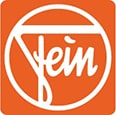






























 Chat
Chat
